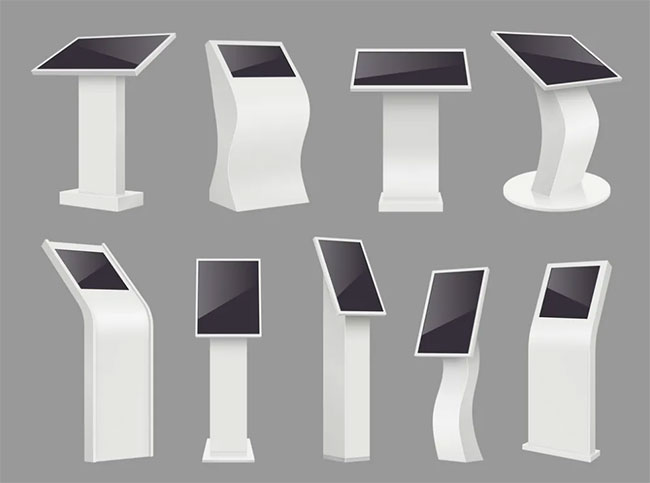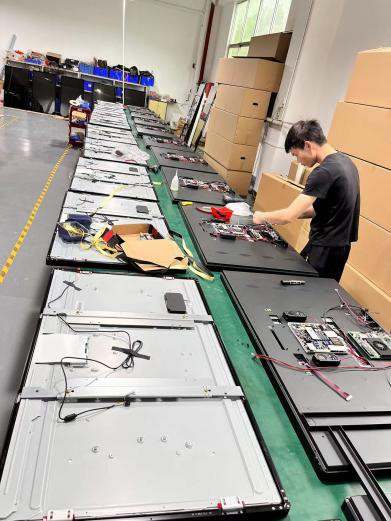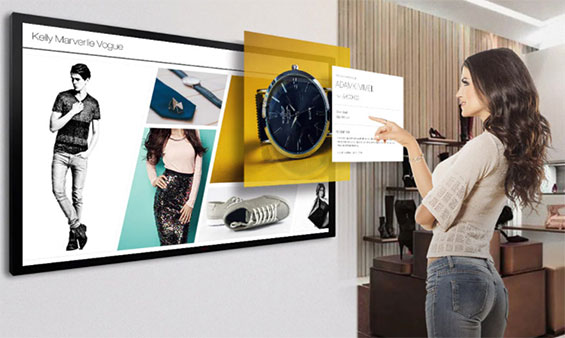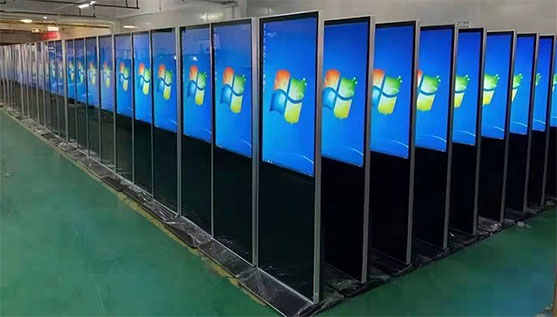Written By Mark Wang On 8th February 2023
When it comes to consumer electronics, the past five years have seen continued innovation in the realm of LCD technology. Never before have the manufacturers been able to incorporate such a high level of touch sensitivity into an LCD panel. This advancement has enabled display manufacturers to integrate touchscreens into TV sets, laptops, and tablets with almost unrivaled ease of use. In this article we will be exploring everything you need to know about LCD touchscreen technology. We will begin by examining the different types of touchscreen technology and how that influences what kind and how many inputs can be connected at once. From there, we will move on to discussing some of the specific technologies that come together to create modern LCD panels with integrated touchscreens.

What is LCD Touchscreen Technology?
When you consider the components and technology required to create an LCD touchscreen, it’s easy to see how it has a long road to commercialization. But, why did it take so long for the technology to reach this point? Although LCDs have been around since the 1950s, it wasn’t until the early 1990s that LCD touchscreen technology was first commercialized. This was due to the demonstration of a panel with a resolution of 480 x 234 pixels. By the year 2000, the resolution of a commercial LCD panel had increased from 16 to 48 pixels per inch. While the resolution and pixel density has steadily increased over the years, it wasn’t until the past decade that the technology was able to be incorporated into consumer devices.
Types of LCD Touchscreen Technology
- Active Matrix - A type of LCD touchscreen technology that utilizes an active matrix panel. The active matrix panel is a laminated design (wherein the LCD membrane is sandwiched between two electrodes) that is used to control the on and off state of each pixel. - Passive Matrix - A type of LCD touchscreen technology that utilizes a passive matrix panel. The passive matrix panel is a grid of thin, transparent LCD pixels that are connected together by wires to create a large, contiguous panel. - Transmissive Touchscreen - A type of LCD touchscreen technology that utilizes electrostatic touch. A transmissive touchscreen is made up of a layer of glass, sandwiched between two electrodes, that uses electrostatic forces to sense touch.

How Many Inputs Can an LCD Touchscreen Handle?
There is no set rule on how many inputs an LCD touchscreen should be able to handle. Instead, the manufacturer is ultimately responsible for ensuring that the panel will be able to handle the load. This can vary depending on the type of touchscreen, the quality of the panel itself, and the amount of load the panel is being asked to handle. In general, however, you can expect an LCD touchscreen with a resolution of 1920 x 1080 to be able to handle at least 10 inputs. Having said that, there are some external devices such as a projector or a large-screen TV that can support a much larger number of inputs.
Capacitive Touchscreens
Perhaps the most common form of LCD touchscreen technology is the capacitive touchscreen. A capacitive touchscreen is made up of two layers of capacitive sensing material that are separated by a conductor layer. The conductor layer is used to transfer the data to the touchscreen. When a finger touches the screen, the capacitive sensing layer changes due to contact. From this, the touchscreen controller receives data that lets the operating system know which keys or icons on-screen are being pressed. There are a number of different types of capacitive sensing material that are used in capacitive touchscreen panels. The most popular is called capacitive sensing resistive. This is used in almost 90% of all capacitive touchscreen panels today. Another capacitive sensing material is called dielectric sensing. It is used in approximately 5% of all capacitive touchscreens.

Electrostatic Touchscreens
An electrostatic touchscreen is made up of two layers of sensing material that are separated by an insulating layer. When a finger touches the screen, the sensing material senses the charge and changes. From this, the controller receives data that lets the operating system know which keys or icons on-screen are being pressed. An electrostatic touchscreen is typically used in environments where direct sunlight is not able to reach the sensor. From this, the touchscreen controller is able to differentiate between a finger touch and the sensor reading that comes from the sun. There are a number of different types of sensing material that are used in electrostatic touchscreen panels. The most popular is called the conductive sensing material that is used in almost 60% of all electrostatic touchscreen panels today. Another type of sensing material is called a transmissive sensing material. It is used in approximately 5% of all electrostatic touchscreens.
Optical Sensing Touchscreens
An optical sensing touchscreen is made up of two layers of sensing material that are separated by an optical filter layer. When a finger touches the screen, the filter layer blocks light and the sensing material changes. From this, the controller receives data that lets the operating system know which keys or icons on-screen are being pressed. An optical sensing touchscreen is typically used when the ambient lighting is too dim for an electrostatic touchscreen to function. From this, the touchscreen controller is able to differentiate between a finger touch and the sensor reading that comes from ambient light. There are a number of different types of optical sensing materials that are used in optical sensing panels. The most popular is called the photo-transmissive sensing material that is used in almost 60% of all optical touchscreens. Another type of optical sensing material is called the photo-refractive sensing material that is used in approximately 5% of all optical touchscreens.

When it comes to LCD touchscreen technology, we are witnessing a quantum leap forward. The combination of technologies available enables manufacturers to create displays with exceptional levels of sensitivity. Furthermore, the wide range of options available enables manufacturers to integrate almost any type of sensors into the display. This includes capacitive, electrostatic, resistive, and optical sensing technologies. What it all means is that the future of touchscreens is bright.
 Mark Wang
Mark Wang
Mark Wang is the Chief Technology Officer at CY Digital Signage. And he has over 15 years experiences in digital signage solutions.
